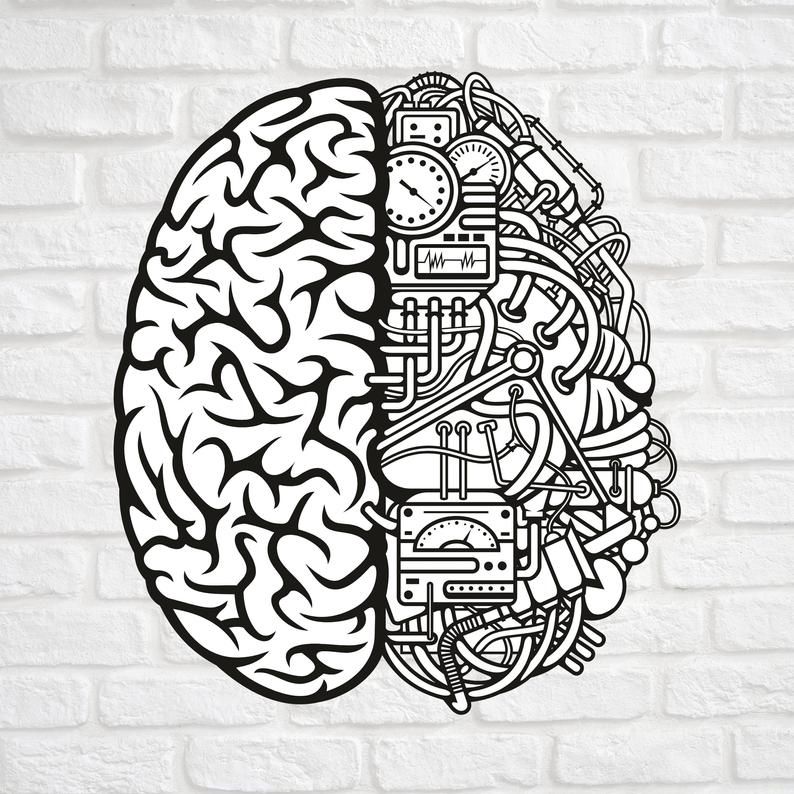Your cart is currently empty!

The Nature of Perception
Our perception of the world is constructed within our minds. We process information across various dimensions, from two-dimensional images and language to understanding the passage of time and its effects on three-dimensional objects. Our brain functions like a sophisticated processor, generating the world around us by integrating external information with internally generated data. This integration uses past experiences to fill in gaps, creating the sensory experiences we know as sight, smell, touch, taste, and feel.
The Brain is a Procedural Engine
The brain’s ability to construct a coherent representation of reality is akin to how a computer generates a virtual environment. According to neuroscientist Anil Seth, “our brains are constantly making predictions about the causes of sensory inputs and then updating these predictions based on actual sensory information” (Seth, 2014). This predictive coding framework explains how the brain synthesizes external stimuli with internal models to create our conscious experience.
Consider how we perceive the difference between water and ice. This difference arises from our brains’ ability to detect physical state changes due to variations in temperature and molecular structure. Water molecules, having higher kinetic energy, move more freely, resulting in a liquid state. This increased movement leads to dynamic interactions and less stable molecular bonds. In contrast, ice molecules have lower kinetic energy, forming stable bonds and a rigid lattice structure that makes ice solid.
This perception is grounded in the brain’s interpretation of sensory inputs. “The sensory properties of objects are interpreted by the brain based on the context provided by surrounding stimuli and past experiences” (Kersten et al., 2004). Thus, our understanding of water and ice is not just a direct sensory experience but a complex interpretation by the brain.
If our brain’s perception were altered by psychedelics, which affect neurotransmitter activity and can cause hallucinations, it might misinterpret or replace external information with internally generated data. Psychedelics, such as LSD and psilocybin, “disrupt the normal functioning of the brain’s default mode network, leading to a breakdown in the usual hierarchy of perception and cognition” (Carhart-Harris et al., 2012). This disruption can cause the brain to generate perceptions that do not align with external reality, demonstrating how flexible and constructed our sensory experiences are.
The integration of sensory information with past experiences highlights the brain’s role as an active interpreter of the world. As noted by neuroscientist David Eagleman, “reality is merely an illusion, albeit a very persistent one” (Eagleman, 2011). This suggests that our perception of reality is a continuous construction process, influenced by both current sensory inputs and our previous experiences.
Understanding that our perception of the world is constructed by the brain provides insight into the complex processes underlying our sensory experiences. From interpreting physical states like water and ice to experiencing altered realities through psychedelics, our brain integrates and interprets information in ways that shape our understanding of the world. This ongoing construction of reality underscores the subjective nature of our sensory experiences and the power of the human mind to shape those experiences through projection.
References:
- Carhart-Harris, R. L., et al. (2012). Neural correlates of the psychedelic state as determined by fMRI studies with psilocybin. Proceedings of the National Academy of Sciences, 109(6), 2138-2143.
- Eagleman, D. (2011). Incognito: The Secret Lives of the Brain. Pantheon.
- Kersten, D., Mamassian, P., & Yuille, A. (2004). Object Perception as Bayesian Inference. Annual Review of Psychology, 55, 271-304.
- Seth, A. (2014). A predictive processing theory of sensorimotor contingencies: Explaining the puzzle of perceptual presence and its absence in synesthesia. Cognitive Neuroscience, 5(2), 97-118.

Leave a Reply